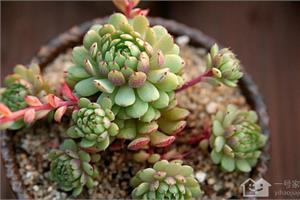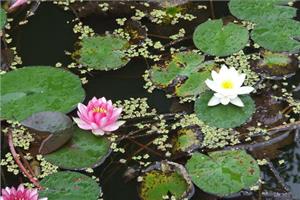Culture methods of cactus matters needing attention in cactus culture
Cactus is a lovely plant, easy to cultivate, but want to raise cactus, or need to make some effort, the following look at cactus cultivation methods, cactus cultivation precautions.

Cactus farming methods:
1, soil: potted cactus generally requires good drainage permeability of calcareous sand or sandy loam, too fertile and soil containing too much soluble salt, easy to cause root rot, causing damage. The modulation ratio of culture soil should also be adjusted in practical application according to the variety of cacti plants, plant size, climate conditions, etc. For example, young plants need more nitrogen and water during their growth period, and the proportion of decaying soil in the culture soil should be increased appropriately. In areas where rainfall is high and air humidity is high, the proportion of river sand can be increased to keep the basin soil ventilated and drained well.
Fertilization: Appropriate fertilization is required during the cactus growing season, especially for grafted species with developed seedlings and rootstocks. Topdressing can be fully decomposed bean cake water, fish intestine water, rotten egg water and other liquid fertilizer, and pay attention to the concentration, light effect is not big, too thick easy to burn roots. The method for preparing liquid fertilizer by household cultivation is to put crushed bean cake, fish sausage, etc. into a jar with a cover, add 2 - 4 times of water, leave a third gap at the upper part of the jar for fermentation, add 10 - 20 times of water to the clarified liquid at the upper part after decomposition, and apply it once every 15 days.
3, watering: cactus watering should be proportional to the temperature, in the growth season from May to October to take more wet management, high temperature in midsummer, evaporation, need to water every day, watering time to early and late is appropriate. In rainy season, the air humidity is large and the evaporation is small. Therefore, the pot soil should be kept half-moist to prevent rotten roots and stems. As the temperature drops in late autumn, watering should be reduced accordingly. Winter to strictly control moisture, keep the soil is not excessively dry can, the lower the temperature should keep the pot soil dry, generally 1 ~2 weeks of watering once, in sunny days before noon, should be careful not to make water touch the stem of cactus, otherwise easy to cause rotten stems.
Temperature: The suitable temperature for cactus growth is 20~30℃, the highest is not more than 35℃, and the lowest is not less than 5℃. Winter can be safely overwintered by keeping the temperature above 5℃, and the drier the pot soil, the cold-resistant. The temperature in winter should be relatively stable, and the temperature difference between day and night is too large, which is easy to cause freezing damage. When the temperature reaches 15℃ or above in spring, it begins to grow, when the temperature reaches 35℃ or above in midsummer, it begins to dormancy, and resumes growth in autumn.
5, light: cactus is a sun-loving plant, is a strong positive, in the strong sunlight conditions to flower bright. Therefore, sufficient light should be given, especially in the winter season. Generally tall cylindrical and flat cactus class more resistant to strong light, summer can be placed outdoors without shade. The smaller spherical species and the seedlings of common cacti should be semi-shady to avoid direct sunlight in summer.
Cactus farming precautions:
1. The young plants of cacti should be replaced once a year. Growing plants do not need to be repotted every year. However, after a certain period of time, the nutrients in the pot tend to be exhausted, the roots are full of pot soil, or due to frequent watering, the pot soil becomes hard and hardened, unfavorable drainage and ventilation, easy to cause root rot. Therefore, it is generally changed every 2 to 3 years. Rapid-growing varieties can be larger than the original pot when changing pots, so it is appropriate that the original pot can be inserted into the new pot. In the process of cultivation, the surface soil of the basin should be loosened frequently to make the soil ventilated well and facilitate the growth of roots.
2. Plants that often maintain a certain degree of dryness and sufficient light in cultivation and management have pale stems and slow growth, but their spines and thorns are developed, robust and beautiful. Often in high temperature, high humidity and poor light conditions, the plant grows rapidly, the stem is soft, the color is bright, but the thorn and thorn growth is not developed, the color characteristics are not obvious, such as red thorn often turns black brown. Therefore, the amount of watering should be adjusted according to the purpose of cultivation.
3. The water quality for watering and spraying should not contain excessive sodium chloride and other salts. General rain, well water can be, but the water temperature should not be too low, close to the best temperature. Tap water should be put into the tank for 1-2 days before use. If the family fish, with fish tank water to irrigate pot flowers more appropriate.
The above is the relevant introduction of this article, I believe you have read this also have a simple understanding, if necessary, you can continue to pay attention to No. 1 home network, to learn more information.
Related
- Wuhan Hospital Iron Tree Blooming Result Was Instantly Frightened by the Gardener Master
- Which variety of camellia is the most fragrant and best? Which one do you like best?
- What is the small blue coat, the breeding methods and matters needing attention of the succulent plant
- Dormancy time and maintenance management of succulent plants during dormancy
- Minas succulent how to raise, Minas succulent plant pictures
- What are the varieties of winter succulent plants
- How to raise succulent plants in twelve rolls? let's take a look at some experience of breeding twelve rolls.
- Attention should be paid to water control for succulent plants during dormant period (winter and summer)
- Watering experience of twelve rolls of succulent plants
- Techniques for fertilizing succulent plants. An article will let you know how to fertilize succulent plants.



